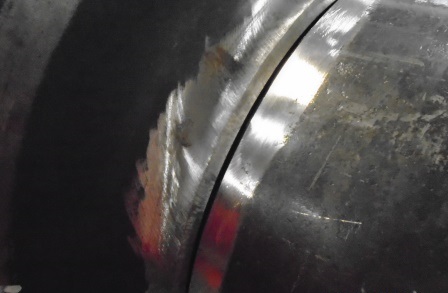Reputable Welding Inspection Gilbert Arizona: Key Variables to Consider for Optimum Outcomes
Wiki Article
Welding Inspection Demystified: Secret Procedures, Devices, and the Vital Role They Play in Maintaining High-Quality Welds
Welding assessment serves as a crucial backbone in the assurance of architectural stability and quality in bonded joints, affecting various sectors from building and construction to manufacturing. What are the crucial procedures and tools that make certain these requirements are upheld?Relevance of Welding Inspection
Making sure the integrity of welded joints is paramount in numerous industries, making the significance of welding inspection obvious. The high quality of welds straight impacts the safety and security, performance, and long life of structures and parts. In sectors such as building, auto, aerospace, and manufacturing, any kind of failure in welded joints can lead to disastrous consequences, including structural failings, equipment malfunction, and death.Welding examination acts as a vital top quality control step, making sure that welds meet defined standards and regulative demands. It recognizes issues such as splits, porosity, and incomplete fusion that may endanger the stamina of the weld. By identifying these issues early, welding assessment can protect against costly rework, delays, and prospective safety and security threats.
Additionally, welding assessment cultivates conformity with industry standards and qualifications, improving the credibility of organizations and their products. It also supports continual renovation by giving beneficial responses to welding employees, allowing them to improve their procedures and methods.
Eventually, the value of welding examination can not be overemphasized; it is necessary for preserving top notch welds, guaranteeing safety and security, and securing investments across various industries.

Key Examination Processes
Reliable welding examination counts on a collection of vital procedures created to examine the high quality and stability of welds. These processes encompass both non-destructive and aesthetic screening (NDT) methods, guaranteeing that any flaws are recognized prior to they jeopardize structural honesty.The very first step in the inspection procedure is a thorough aesthetic assessment, which allows assessors to analyze welds for surface issues such as fractures, damages, and insufficient fusion. Adhering to visual checks, various NDT strategies may be used, including ultrasonic screening, magnetic particle screening, and radiographic testing. Each approach provides unique benefits; for instance, ultrasonic screening can find internal problems, while radiographic testing provides a long-term document of the weld's interior framework.
Furthermore, it is crucial to confirm conformity with relevant codes and requirements, ensuring that the weld satisfies market requirements. This consists of checking weld dimensions and placement, as improper measurements can bring about failures under load.
Necessary Devices for Inspection
Consistently making use of the right tools is essential for achieving precise welding examinations. A comprehensive set of evaluation tools assists make sure that welds meet stringent quality standards and specifications.Among the primary tools is the visual evaluation gauge, which permits inspectors to assess surface area problems, such as sanitation and surface area coating, straight. In addition, micrometers Your Domain Name and calipers are essential for measuring weld dimensions and ensuring they adhere to needed tolerances.
For more comprehensive evaluations, ultrasonic testing (UT) equipment is indispensable. This method uses high-frequency sound waves to spot internal flaws and analyze product thickness. Magnetic particle screening (MT) and dye penetrant testing (PT) are critical for determining surface and near-surface defects, giving instant visual indicators of possible issues.
Welders should also be equipped with solidity testers, which review the mechanical buildings of the weld metal and base products, guaranteeing they meet specific requirements. Recording findings with electronic evaluation devices improves traceability and quality control. By using these vital devices, inspectors can preserve top quality welds, inevitably contributing to the safety and security and reliability of bonded frameworks.
Typical Defects and Their Detection
Welds, similar to the foundation of structural integrity in building and construction and manufacturing, can display numerous defects that compromise their efficiency and safety and security. Common flaws consist of porosity, splits, undercut, lack of combination, and slag incorporations (Welding Inspection Gilbert Arizona). Each of these flaws can materialize because of incorrect welding techniques, poor check my reference material choice, or poor preparation
Discovery of these issues can be attained via numerous non-destructive screening techniques, including visual evaluation, ultrasonic testing, and radiographic screening. Each approach plays a critical role in identifying these mistakes, making certain that the stability of the weld is preserved and lowering the threat of failing in vital applications.

Finest Practices for Quality Control
Ensuring why not try here the best of welds is extremely important for architectural stability and safety, specifically in sectors where the consequences of failing can be serious. To accomplish this, several finest practices for top quality assurance must be carried out throughout the welding process.
First, a durable welding procedure specification (WPS) must be established, outlining the required criteria for every welding procedure. This makes sure consistency and adherence to market criteria. Second, detailed training and certification of welders are necessary; competent employees are better equipped to generate top quality welds and identify possible problems.
Regular inspections need to be integrated into the welding procedure, making use of both visual and non-destructive screening (NDT) approaches to discover problems early on. Routine calibration of examination devices is important to preserve precision. In addition, documenting all welding activities, including assessments and rehabilitative actions, creates a traceable document that can be vital for quality assurance.
Final Thought
To conclude, welding examination functions as a vital system for making certain the honesty and reliability of welded joints across industries - Welding Inspection Gilbert Arizona. Through the execution of vital examination procedures and the utilization of important tools, organizations can successfully determine and attend to prospective flaws. Adherence to finest techniques in quality control not only enhances safety and security but also guarantees compliance with industry criteria, inevitably adding to the durability and performance of structures and componentsWelding assessment serves as an important backbone in the assurance of architectural honesty and top quality in welded joints, affecting various markets from building and construction to manufacturing.Ensuring the integrity of welded joints is extremely important in different industries, making the importance of welding inspection indisputable.Welding evaluation serves as an important high quality control measure, ensuring that welds fulfill specified criteria and regulatory requirements. By utilizing these essential devices, examiners can keep top notch welds, eventually contributing to the security and reliability of bonded structures.
In final thought, welding examination serves as a crucial device for ensuring the integrity and reliability of bonded joints across markets.
Report this wiki page